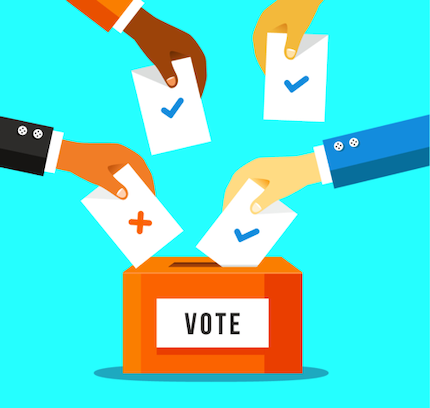On October 22, 2018, elections were held in Ontario’s 400+ municipalities. Local elections tend to report lower voter turnout than provincial and federal ones, and Ontario’s were no exception with only 38 per cent turnout.
However, given the direct relevance of municipal issues to our daily lives and the opportunities that these contests provide for local political engagement, it is important to be attentive to both the administration and the results of local political contests. The number of female candidates increased to 27 per cent overall in 2018, as compared to 23 per cent in 2014. Also, the use of electronic voting increased significantly.
This piece discusses challenges regarding the accessibility of municipal politics.
Accessibility
To many, accessibility means convenience. It means living in close proximity to restaurants, grocery stores, banks and many other basic needs. We rarely stop to consider the privilege we were born with. Many of us are able to complete daily tasks without hearing multiple scary voices in our heads. We are able to walk to the store for milk or bread or drive our cars to work every day because we went to college or university and are privileged to have an education that leads us to a career. These are all daily activities that are accessible to the majority of readers.
To be able to live in Canadian society in a healthy manner is a privilege that some Canadians have; however, many do not. It would be horribly debilitating to wake up every single morning in a questionably heated room, with a thin blanket, with the possibility of rodents running over you, not knowing whether harm awaits when you step out of bed. This is a reality that many homeless folks living in shelters in downtown Toronto face, but to a large extent, they lack the opportunity to have a voice that could change their circumstances. The Elections Act confers to every Canadian the right to vote, and the charter recognizes the right to democratic participation.
Heartstrings
The Ford family states that they are the people’s people who identify with all populations. As is known to the public, members of the Ford family have struggled with addition. As the late Rob Ford commented, addiction is a disease one is born with. The Ford family has had to make peace with losing a family member and public figure, the previous major of the City of Toronto who (reportedly unrelated to his death) suffered with addiction and mental health. Middle and upper class families in Canada have a different experience with mental health and addictions as many have the resources to obtain supports and treatment. The combination of the two creates barriers to services and activities such as voting, especially if one is born into a poor or disadvantaged family.
When a person is born into a family of low socio-economic status, there are often barriers to basic needs. Addiction and mental health create barriers to obtaining these basic needs, such as a permanent residence or identification, which also happen to be necessary vote. Vulnerable populations like the homeless feel stereotyped or intimidated in public areas where voting polls are often located. Voter participation can be easily influenced by increasing accessibility of polling stations and supports to obtaining necessary documentation. Those with mental health challenges have the right to vote. Every human has the right to accessible voting stations so that they can overcome barriers and their voices can be heard. There is a large population who are extremely vulnerable who need to realize they have the right to influence their own future. An obvious solution that would influence voter turnout would be to make voting accessible in highly populated shelters. A large population is right at politicians’ finger tips. The question is: are politicians brave enough to make voting accessible to everyone, from all walks of life?
Moving Forward
On municipal election day in the fall of 2018, I was working as a social worker at a homeless men’s shelter. I examined accessible voting in a subgroup of homeless men located in downtown Toronto, who were experiencing both mental health and addictions challenges. I altered my work schedule for the day to support clients and accommodate the election. In hopes of influencing voter turnout, I provided support by taking the time to educate individuals about voting procedures, their right to vote, and to provide brief letters of support confirming, name, date of birth, and residence upon request. Therefore, the residents of a highly populated shelter in Toronto were able to vote due to an increase of access to polling stations and supports, such as being able to access the identification data base, confirmation of identity, and residence. Otherwise they would not have been allowed to vote, as they have limited resources and barriers such as mental health and addictions which interfere with basic privilege such as having a copy of valid identification or a permanent residence. How can an oppressed population make change in their life, if they don’t have a say in the politics that guide access to services?
In short, voting supports put in place for an at-risk and vulnerable population proved to be a very simple solution to increase voter turnout and democratic participation in a highly populated area. One thing that we must give credit to the government for is locating polling stations in the lobby area of the shelter. Increased accessibility and supports for highly populated areas are simple solutions for increasing voter turnout. Democratic participation is an easy way to empower those who rarely have a voice with matters that impact them directly. With a solution as simple as this, it makes one wonder, is this an oversight or voter oppression?

